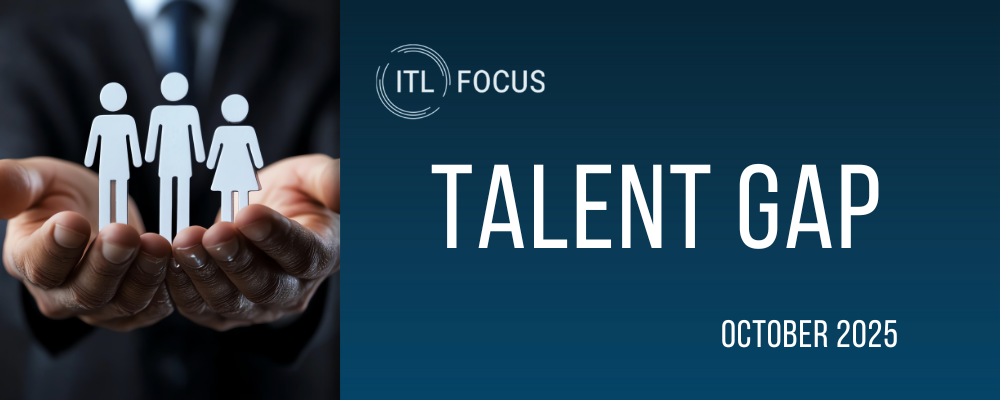62% of HR professionals who participated in SHRM's 2025 study stated they operate beyond their normal capacity. Such heavy workloads can lead to burnout, hindering HR teams' ability to manage human resources efficiently, which can damage entire organizations.
Optimizing HR tasks with intelligent process automation (IPA) can help alleviate excessive workloads, prevent burnout, and improve efficacy. Unlike traditional process automation, which solely focuses on mechanizing structured, rule-based processes, AI-enabled IPA can be applied to a broader range of HR activities, including those requiring intelligence. Forward-thinking business leaders have already recognized the potential of IPA for enhancing various HR processes, with streamlining HR workflows with automation and AI being their top priority for the next one to two years.
Based on our experience in HRMS software development, here are key concepts of intelligent automation in HR, its common use cases, and implementation best practices.
Key technologies for intelligent automation in HR
● Robotic process automation (RPA)
Traditional RPA bots are already widely used in HR to automate repetitive, rule-based tasks, but they can't handle more complex and non-linear processes. Augmenting RPA bots with AI models enables them to process both structured and unstructured information, make informed decisions, and learn from data, which allows companies to streamline more time-consuming HR tasks.
● Smart assistants
Smart assistants use artificial intelligence capabilities to understand user queries formulated in natural language via voice or text and respond to them accordingly, from providing information upon request to performing actions across corporate systems, saving HR specialists' time.
● Personalization
Nearly 20% of employees surveyed by McKinsey in 2025 reported dissatisfaction with their employer, while 7% expressed a desire to leave their jobs, which can pose a risk of quiet quitting. Tailoring employee experiences to their unique needs and preferences is one way to make staff feel more valued and satisfied, which can improve retention.
However, providing personalized support services, career development opportunities, and wellness programs can be exhausting for HR teams already operating under heavy workload. Leveraging AI-enabled tools equipped with experience personalization capabilities is a way to address this challenge.
● HR data analytics
To identify employee skill gaps, detect turnover risks early, and make informed workforce management decisions, HR teams need to analyze large amounts of workforce-related data, which can be challenging due to its ever-increasing volumes. Automated AI-enabled data analysis tools can support HR teams in processing relevant information and generating data-based insights to accelerate and enhance HR decision-making.
Common uses for intelligent automation in HR
● Recruiting
Recruitment is often considered the most critical yet complex and time-consuming aspect of human resource management. Luckily, many recurring recruiting tasks can be streamlined with the help of intelligent process automation tools.
For example, Majid Al Futtaim, a Dubai-based retail and leisure company, leveraged a set of IPA technologies, including experience personalization and HR data analytics tools, to build a more efficient and smooth hiring process. Now, they use AI to automate candidate scheduling, personalize candidate communication, assess candidate fit for the company's culture, and even predict their likelihood of success in different roles. "We've reduced our time to hire by 30% with AI. AI has also driven a significant improvement in the quality of hires, ensuring that every new team member aligns with our culture and contributes to our vision," said Mai Elhosseiny, vice president of talent at Majid Al Futtaim.
● Onboarding employees
Onboarding newcomers is another time-consuming activity that IPA can optimize. A prime example is Santander, an Argentina-based financial services company that hires between 50 and 100 employees per month. Onboarding used to be performed manually and sequentially and required an average of six weeks per person. Santander automated this process with intelligent RPA bots, which can automatically inform relevant departments about new team members, set up employee accounts, and perform the necessary compliance checks for each new hire. As a result, onboarding was reduced to just two days.
● Supporting employee talent development
Talent development can create excessive workloads for HR teams. But AI-enabled IPA tools have already proven efficient for optimizing diverse aspects of talent development, from performance appraisal to internal talent acquisition and training personalization.
Kuehne+Nagel, a Switzerland-based logistics provider, intended to enhance visibility into career development opportunities for nearly 78,000 employees across 1,400 locations, streamline internal recruiting processes, and eventually stimulate internal mobility. To achieve these goals, the company decided to implement an AI-enabled internal talent marketplace. After employees fill in their profiles within the new system, AI algorithms automatically analyze their data, match it with open learning and job opportunities, and provide recommendations. The AI system also generates analytical insights for recruiters, which helps assess the company's current talent needs, evaluate talent gaps and strengths of employees, and identify internal candidates best-suited for specific jobs. The tool already helped the company increase conversion rate for internal candidates by nearly two times, while decreasing the time required to fill for internal requisitions by 20%.
● Handling employee queries
Companies can apply AI-enabled automation tools to handle various types of employee queries, including questions about benefits and training programs, time-off requests, and medical document submissions.
Covestro, a German manufacturer of high-tech polymers, was looking to expedite the processing of sick leave certificates submitted by employees. Manual processing took an average of seven minutes, which was too time-consuming, given that HR teams received more than 500 certificates per week. The company deployed AI-powered RPA bots, which can classify submitted documents as sick leave certificates, extract necessary data, and then input it into employee profiles in the ERP system. As a result, Covestro saved 85% of the time HR teams previously spent on manual sick leave submissions processing.
Useful practices for implementing intelligent automation in HR
● Implement process intelligence tools
Automating the right processes is crucial, and AI-powered process intelligence tools can identify HR activities most suitable for automation.
These tools can provide process mining and task mining capabilities helping identify bottlenecks within workflows, visualize business process data for stakeholders involved in a project, and even predict the impact of automation on specific tasks.
● Start with a pilot automation project
Conducting a pilot IPA project allows companies to validate the feasibility of IPA without incurring expenses associated with a full-scale implementation, detect hidden automation pitfalls and hurdles early on, and lay a strong foundation for larger IPA initiatives.
For a pilot project, companies should select one or two HR-related processes and establish clear KPIs to measure the impact of automation. Companies need to carefully evaluate the project's success, collecting stakeholder feedback and analyzing lessons learned.
● Communicate IPA benefits to employees
According to Deloitte's 2025 report, companies are six times more likely to achieve a financial advantage from AI when employees feel they personally derive value. However, the same report reveals that 77% of companies do nothing to share the improvements AI can bring.
Managers spearheading IPA adoption should work closely with HR teams from the start of a project, articulating the improvements IPA can bring to their work and keeping them informed about the progress and impact of IPA.
Modern HR teams regularly struggle with excessive workload, which hurts their productivity. Implementing intelligent process automation to optimize a range of recurring HR tasks is a way to alleviate pressure and enhance the performance of human resources departments.








